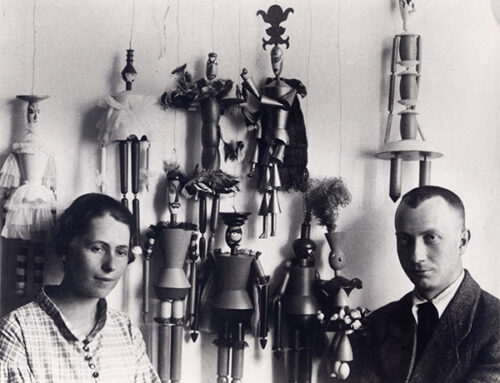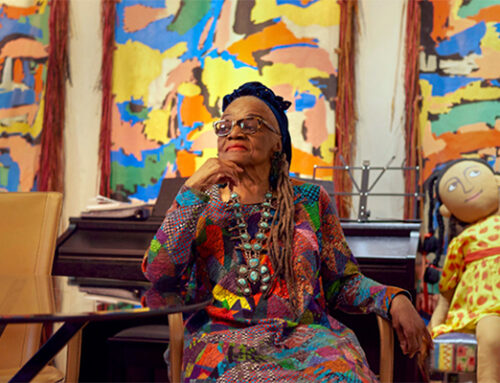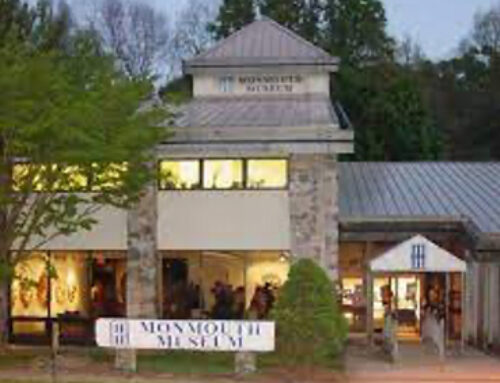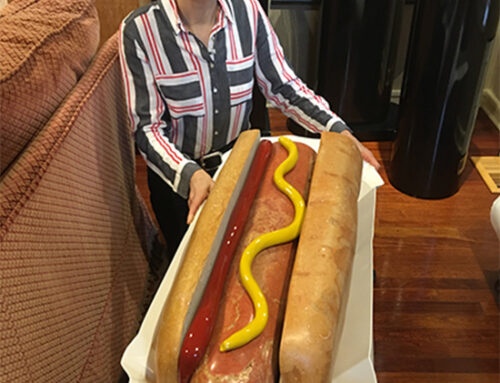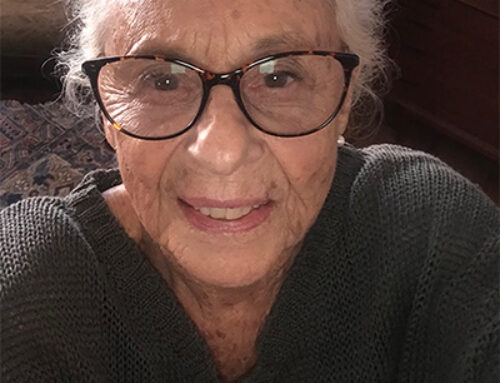
by Linh Vivace
Since the start of a new year is often accompanied by a desire to set meaningful goals for the months ahead, this article has a practical aspect to it: it pertains to the national movement to create more monuments honoring women, and I interviewed the Vice-Chair of the committee behind one such successful initiative. A sign of the movement’s traction, I can happily report that I had the option of choosing from many successful initiatives, including Manhattan’s own in Central Park (the Women’s Rights Pioneers Monument). Every one of those cases is worthy of being featured, but I believe it will become apparent why, in limiting myself to covering only one in this article, I chose the case of Lexington, Kentucky—and, yes, it has something to do with horses.

Downtown Lexington, Kentucky; photo by Linh Vivace
PATHFINDING in Lexington, Kentucky
It was a startlingly cold and gusty morning when I parked my car and began exploring downtown Lexington, Kentucky, on foot. Unacclimated, I cut an anonymous figure that could only be described as a walking puffer coat topped with a chunky beanie as I moved along. At the corner of West Vine and South Mill Streets, I met with my intended party—but to describe these anonymous figures only as garments topped with hats would be not to know what one is looking at.

West Vine and South Mill Streets, downtown Lexington, Kentucky; photo by Linh Vivace
I was standing in front of the first public monument in Lexington honoring women. Its unveiling in August 2020, like many events in 2020, celebrated the 100th anniversary of the ratification of the 19th Amendment. Lexington specifically had some very active suffragists in its history, including Madeline McDowell Breckenridge, Laura Clay, and Dr. Mary Britton. These notable women were further joined by women in the community whose names are not known but who nevertheless accepted the risks of participating in marches and protests without that glory. However, for a city lacking neither women’s contributions to history nor women to be inspired by them (population of Lexington: approximately 320,000)—and with an abundance of statues of horses—why did it take so long for a single permanent monument paying tribute to a woman or women to appear?

Barbara Grygutis, STAND; photo by Linh Vivace
I pondered this question as I looked up at the towering silhouettes. About 20 feet high, 30 feet wide, and made of aluminum with integrated lighting, the statue is called STAND. One could easily mistake it for being as old as the plaza it occupies, so natural does it look and feel in the spot and city, like it had always been part of the planning. However, the date on its base clearly states “2020”. The flawless integration you can simply attribute to the mastery and site-specific design of the monument’s artist, Barbara Grygutis.

Base of Barbara Grygutis’s STAND; photo by Linh Vivace
On the base’s southwestern face is text from the 19th Amendment. On the southern face are the following words:
“VOTING IS A FUNDAMENTAL RIGHT IN A DEMOCRACY. WE COMMEMORATE THE ACHIEVEMENTS OF KENTUCKY WOMEN SUFFRAGISTS IN THE PASSAGE OF THE 19TH AMENDMENT TO THE U.S. CONSTITUTION. THIS AMENDMENT DID NOT END DISCRIMINATION, INTIMIDATION, OR VIOLENCE. STRENGTHENED BY THE FEDERAL VOTING RIGHTS ACT OF 1965 PROHIBITING RACIAL DISCRIMINATION IN VOTING, THE 19TH AMENDMENT MADE VOTING A REALITY FOR ALL WOMEN. AS THE STRUGGLE TO OVERCOME INEQUALITY CONTINUES, WE MUST RESPECT AND EXERCISE THIS RIGHT.”
I appreciated the caveat since, like for many women of color, 2020 was not really my centennial (foreign-born Asian women being barred from naturalization until the Immigration and Nationality Act of 1952, this demographic’s will actually be in 30 years). Only behind the monument, on a free-standing board, does one finally get a hint of the amazing story here: the Breaking the Bronze Ceiling initiative. That brings me back to my pondering: Why did it take so long?

Breaking the Bronze Ceiling donor board; photo by Linh Vivace
In fact, it only took three years—if by “it” you mean the time from idea to unveiling. When, in August 2017, former Councilmember Jennifer Mossotti (9th District) read in a TIME article that less than 7% of the more than 5,000 monuments in the United States honored women, she took notice and, above all, took action. Mossotti called attention to this deficiency in the city’s art and initiated conversations on the issue within the council. However, it was her decision to form a community-based group—the Breaking the Bronze Ceiling Steering Committee, chaired by her—that ultimately gave Lexington a monument recognizing women’s achievements. Not only did the Steering Committee work to raise funds (the goal was $500,000), it raised awareness of the city’s history and engaged members of the community by organizing public events. Its participation in the 2018 and 2019 Fourth of July parades even sought to recreate marches from Lexington’s suffrage movement.

2018 Lexington Fourth of July Parade; image courtesy Breaking the Bronze Ceiling
After my visit to Lexington, I was very fortunate to have the opportunity to interview Councilmember Kathy Plomin (12th District) via videoconference. Kathy had spearheaded the Breaking the Bronze Ceiling fundraising effort as Vice-Chair of the Steering Committee. Surprisingly, she described the funds as not being hard to raise; the harder part was staying on course after March 2020 due to the pandemic. Naturally, the Steering Committee wanted to see the unveiling of the monument coincide with the true centennial of the ratification of the 19th Amendment. That meant a deadline of August 18th. Public engagement became trickier to sustain, but donations fortunately kept coming in, and the monument had the benefit of being outside for when safety restrictions finally loosened. In the end, the committee met its deadline and exceeded its goal, raising about $600,000. The dedication ceremony occurred on August 19th, 2020, postponed one day due to rain.

Dedication ceremony of Barbara Grygutis’s STAND on August 19, 2020; images courtesy Breaking the Bronze Ceiling; photos by Rob Bolson

Dedication ceremony of Barbara Grygutis’s STAND on August 19, 2020; images courtesy Breaking the Bronze Ceiling; photos by Rob Bolson
In sharing why she thought the initiative had been so successful, Kathy mentioned what she saw as pent-up enthusiasm for the cause—although the level of enthusiasm had surprised even her. For example, there had been a kick-off celebration that brought nearly 500 women to the Kentucky Theatre, where a movie about suffragists was shown, and a media event had included former Governor Martha Collins (the only female Governor in Kentucky’s history) and other dignitaries. Then, of course, there were the donations. The city donated $100,000 from its 2019 budget and lent the services of Lisa Grober, a project manager for the city, for the construction project. Of the 483 donors, about 80% were women, and while one woman gave $20,000, many gave $10. As Kathy put it, with everyone cloistered during the pandemic, there seemed to be a need to wrap one’s arms around something warm.
However, she also mentioned luck. One of the most impressive accomplishments of the initiative was securing such a central location. As it turns out, Breaking the Bronze Ceiling did not pay a cent for the spot. The Webb Companies donated it following a casual conversation between Kathy and a friend who worked there. The topic of the conversation? The typically inconsequential “What are you up to?” After hearing Kathy’s response, the friend got the CEO involved, and now the city’s first monument honoring women stands in Lexington Financial Center Plaza. Up until that point, it looked as though it would end up in a small park somewhere, Kathy recounted.
Of course, the statue is impressive in its own right, independent of its location. Its design was indeed site-specific, however, as described to me by Nathan Zamarron, Community Arts Director of LexArts. When enough funds had been raised to warrant the call for proposals, responsibility for the process was given to LexArts, a nonprofit organization. Nathan said that the national request for qualifications received applications from 128 artists, of which four were chosen as finalists (three women and one man, as no restrictions were placed on gender). These artists were subsequently paid for a site-specific proposal, and a special panel made the final selection by vote. Grygutis’s STAND was the unanimous winner.

Barbara Grygutis, STAND; image courtesy Breaking the Bronze Ceiling; photo by Rob Bolson
Curious about Kathy’s commitment to the initiative, I asked her if she was an artist herself. She answered no but mentioned that she had served on the LexArts Board of Directors and considered vibrant arts to be a good indicator of a strong community. To that end, she said that she could see Breaking the Bronze Ceiling continuing with outreach and maybe even scholarships for young women, perhaps with the University of Kentucky Art Department, since she had tremendous admiration for the creativity of women artists and how much they can juggle. In the meantime, the city will be taking ownership of the monument.
Of course, I had to ask Kathy for her advice to those hoping to undertake similar initiatives. She replied unequivocally: “Go for it. You will be delighted by the response you get—not just from women, but from the community. Just go for it! I think this is what these women were about in the 1920s.” In a way, her words answer my question above: it took so long because “it” was predominated by the time spent waiting for someone to have the idea—to “go for it.” The absence of monuments honoring women meant that such an idea and energy had to emerge in a void first, and such emergence is neither inevitable nor easy. That makes any such instance essential to share—doing so helps to destroy the void for others and lets them know that there is energy now.
Linh Vivace
www.linhvivace.com
Instagram: @linhvivace





